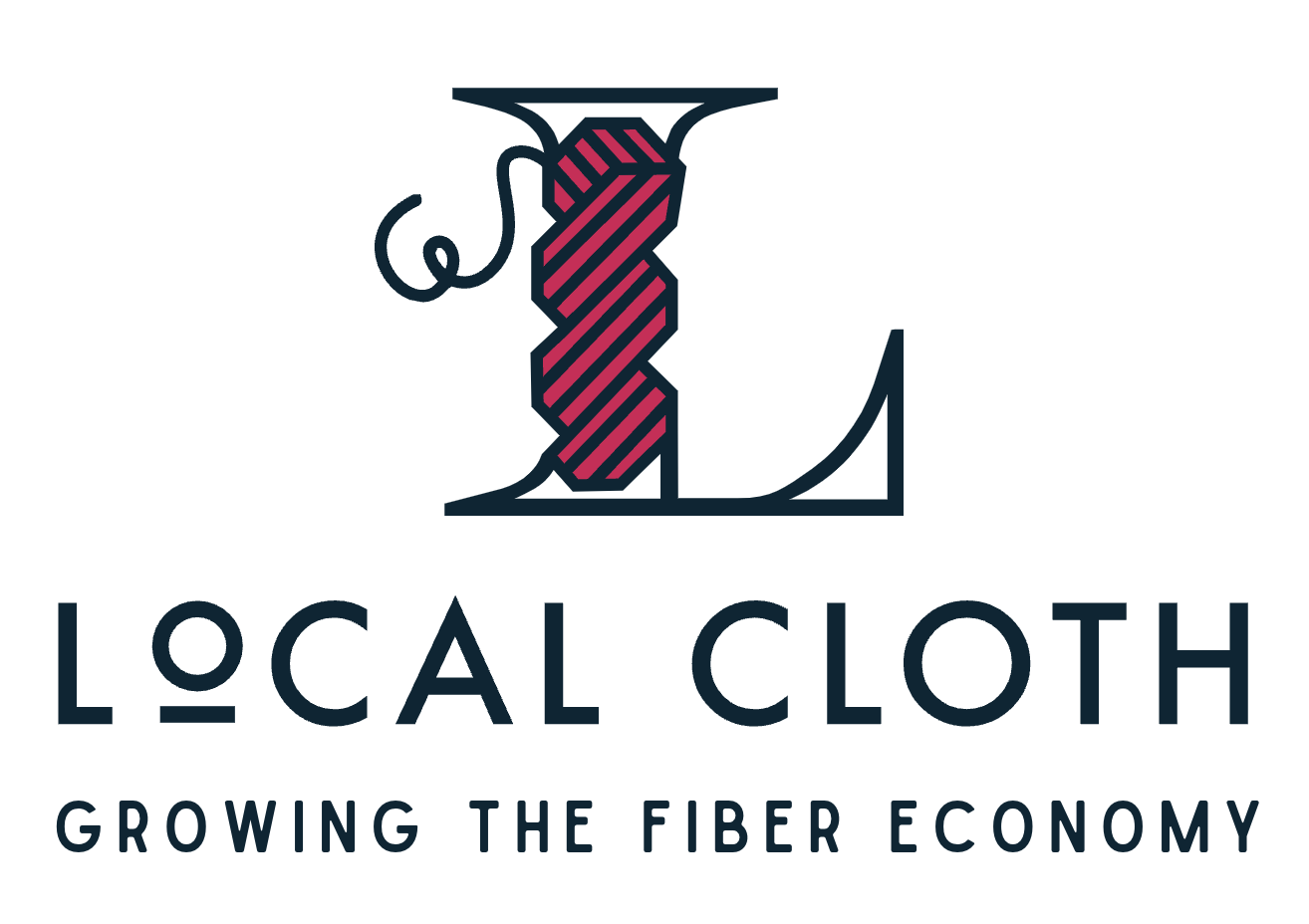The Spinning Study group of Local Cloth meets once per month to congregate, share spinning projects and a variety of fiber preparation and spinning techniques.
This past Sunday afternoon the topic was how to diz. I learned to spin during the 2020 pandemic with a couple of lessons to get me started. Since I was out-of-commission for a year I have missed many wonderful spinning study group sessions. This particular diz event is my first time back in person at the Local Cloth studio with the group. It seems everyone was interested as there was quite a crowd. Most did not have much experience with the use of a diz to make roving, but several who did shared their knowledge and equipment. We explored with hands on the results from using a diz to make roving from blended fibers generated with a blending board, hackle, or a drum carder. Sally Thomas showed us how to make diz directly from combed fiber still attached to the comb (Fig 1-3) .
Time out!
What is a diz? This link takes you to a Spin Off article with lots of information on the diz and what is used for. Even more information on the design of dizzes and the outcome of using one that impacts the type and thickness of the yarn that is spun is found at this link.
Fig. 1. An example of a diz and a button that could be used as a diz.
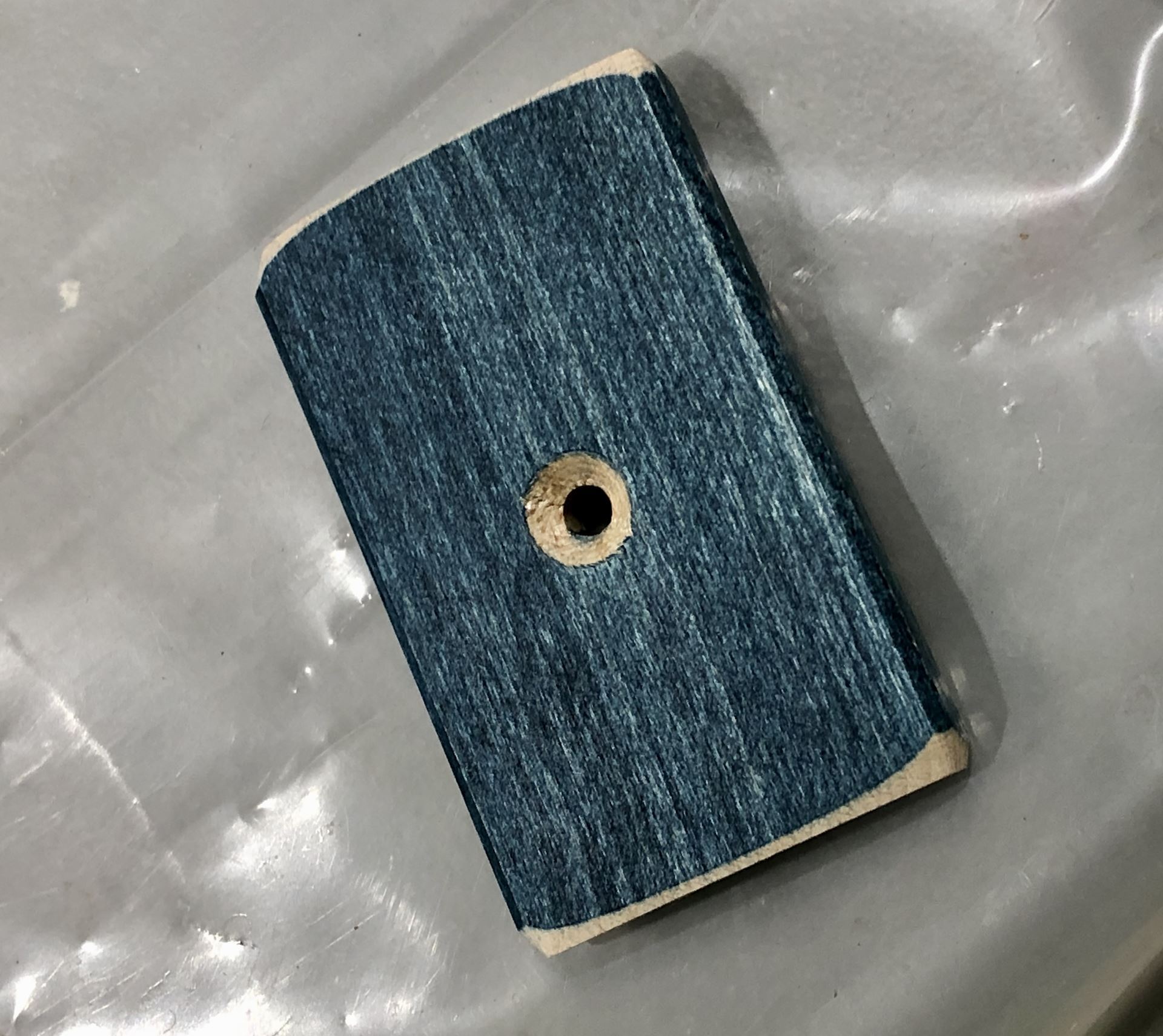
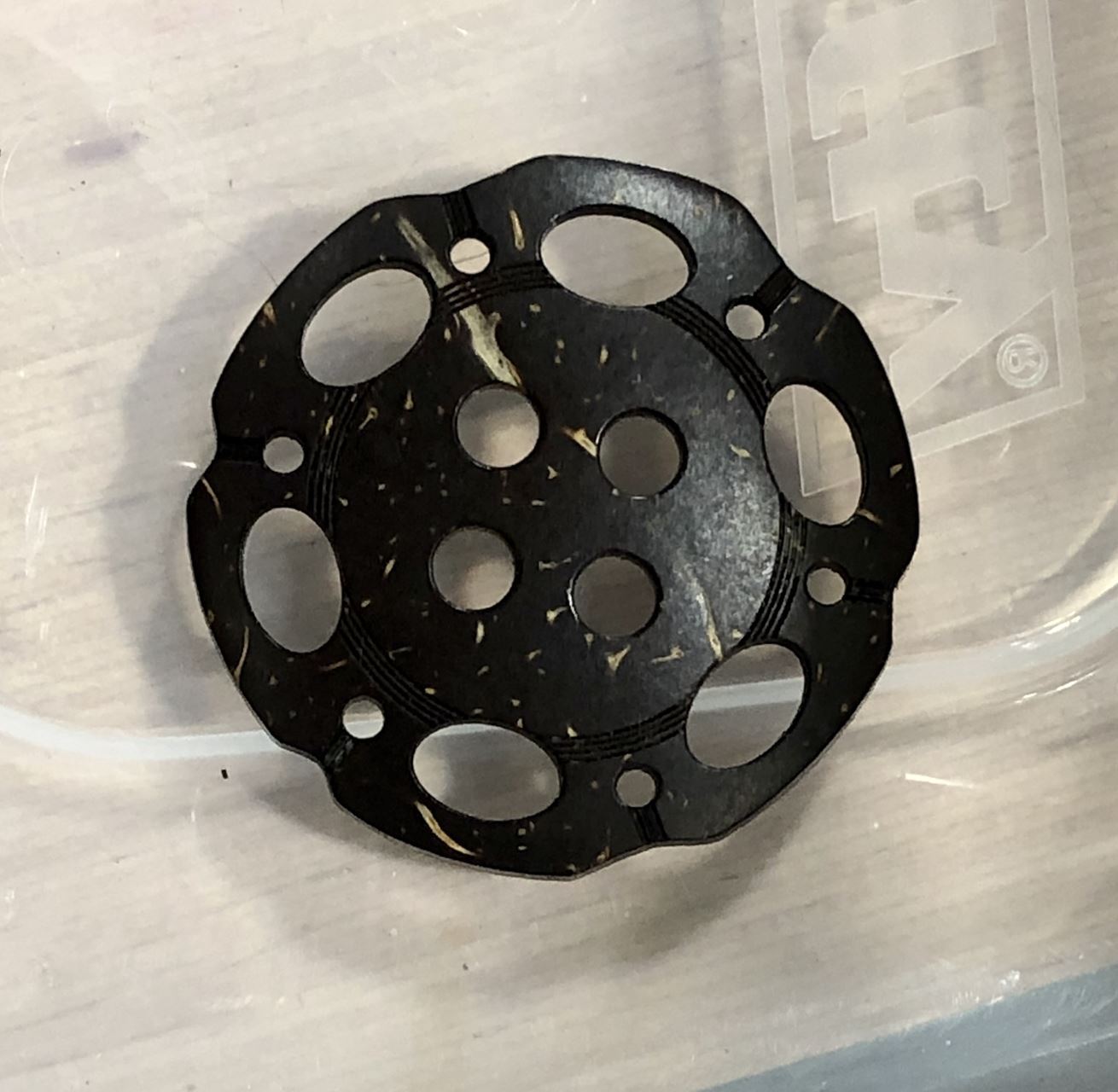
What is a hackle? A quick search found these interesting links, from Majacraft, a maker of spinning tools, and from Spin Off and one on blending colors using a hackle. I have so much reading to do. But, we just jumped in and everyone tried several approaches.
Fig. 2. A hackle for blending fiber.
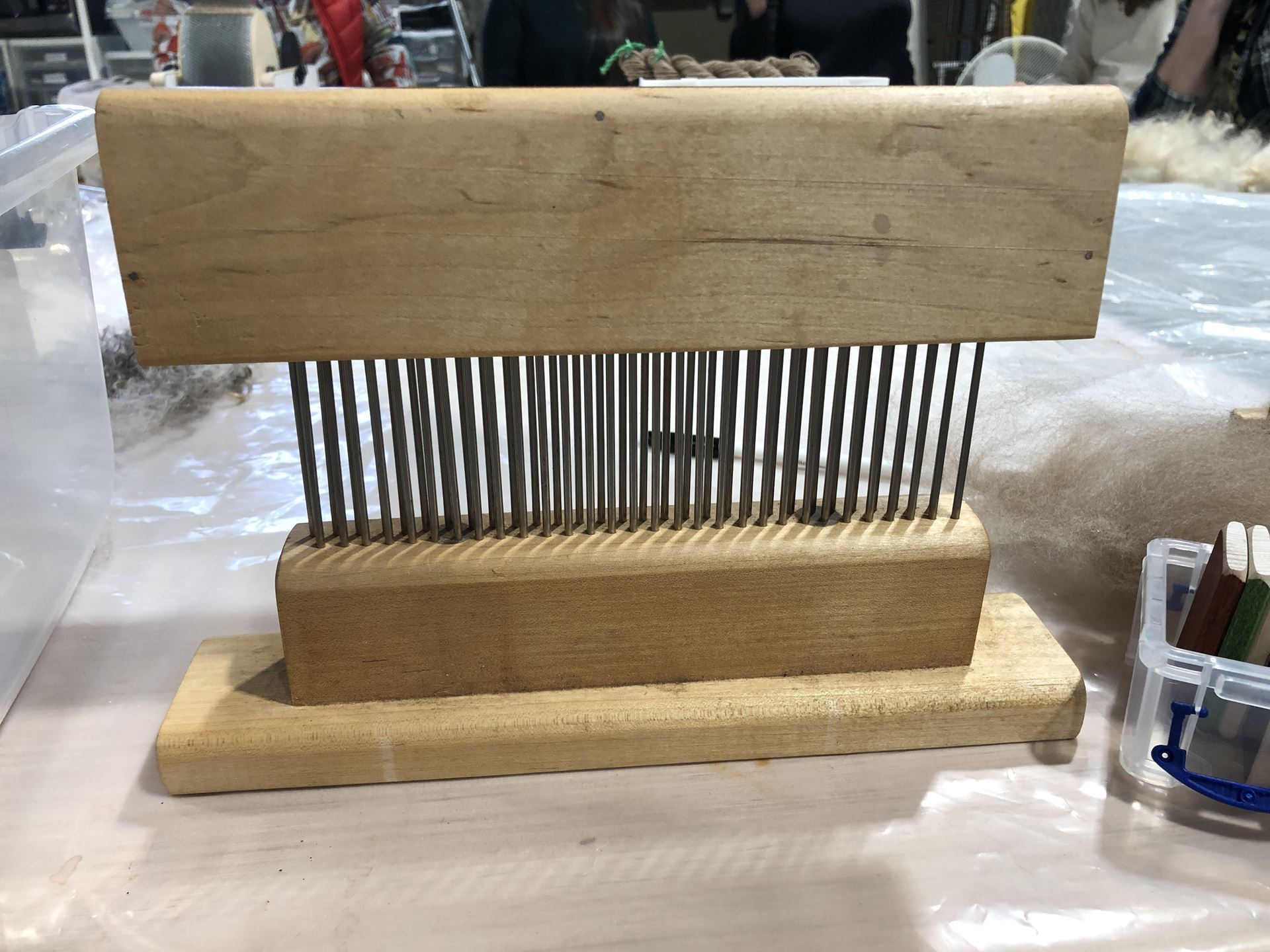
What is a blending board? Here is a YouTube movie from Ashford illustrating blending different colors or types of fibers using the blending board. Of course Spin Off magazine has an excellent article on generating rolags for spinning yarn using a blending board. We used the diz to create roving instead of rolags.
What is a drum carder? Here are some photos of various drum carders. Drum carders can be manual crank or electric, you apply fiber at one end and a small drum aids loading of the fibers onto a larger drum. The action of the drum blends and aligns the fibers.
Judi Jetson chose Corriedale locks and aligned them blunt cut end to tip end. Then Sally Thomas demonstrated loading locks onto the comb and combed locks using two combs to transfer fiber back and forth. This eventually resulted in neatly combed fiber (see below).
Next, Sally used the diz to pull fiber from the comb. Sally has a wonderful small kit of dizzes in different colors with tiny to larger holes.
Fig. 3. Judi Jetson sorting locks blunt cut end to tip for loading comb; first lock placed on comb blunt end to back of comb, tip in left hand.
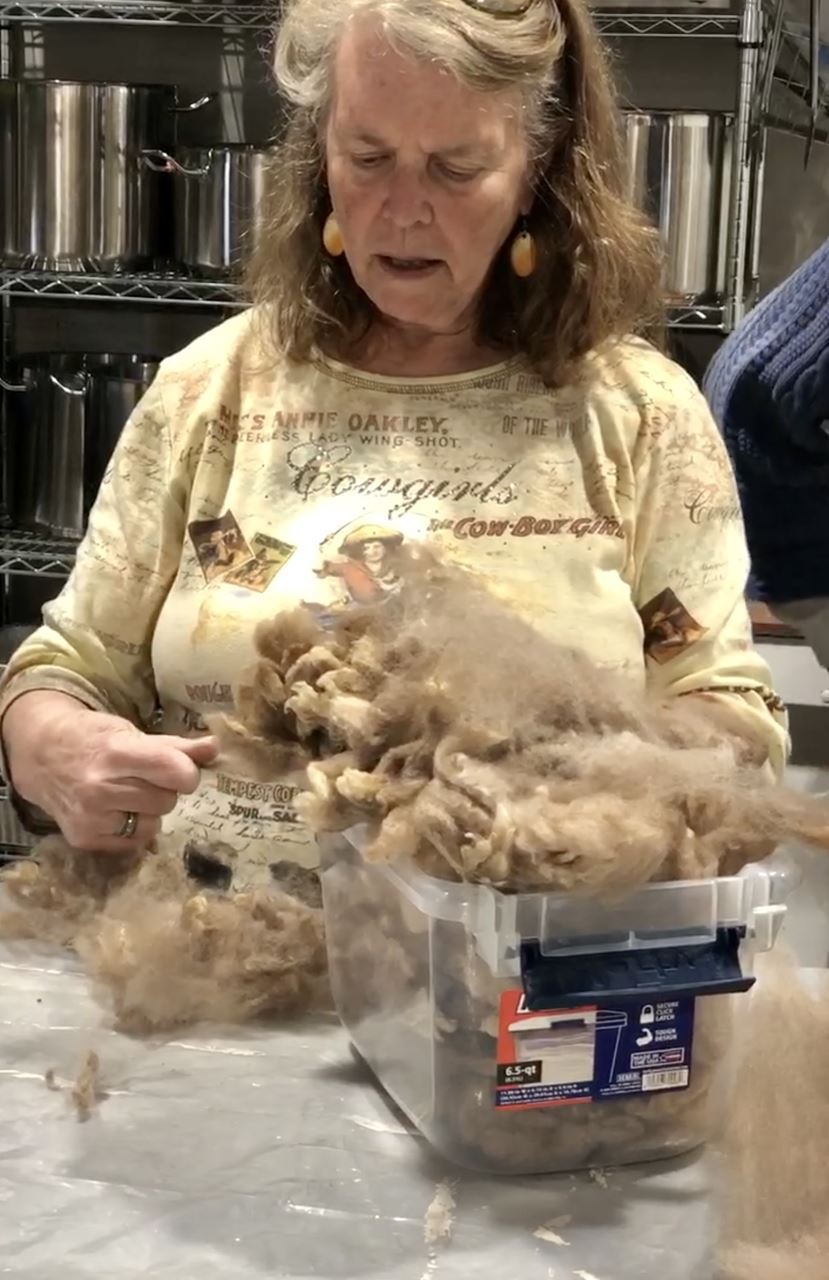
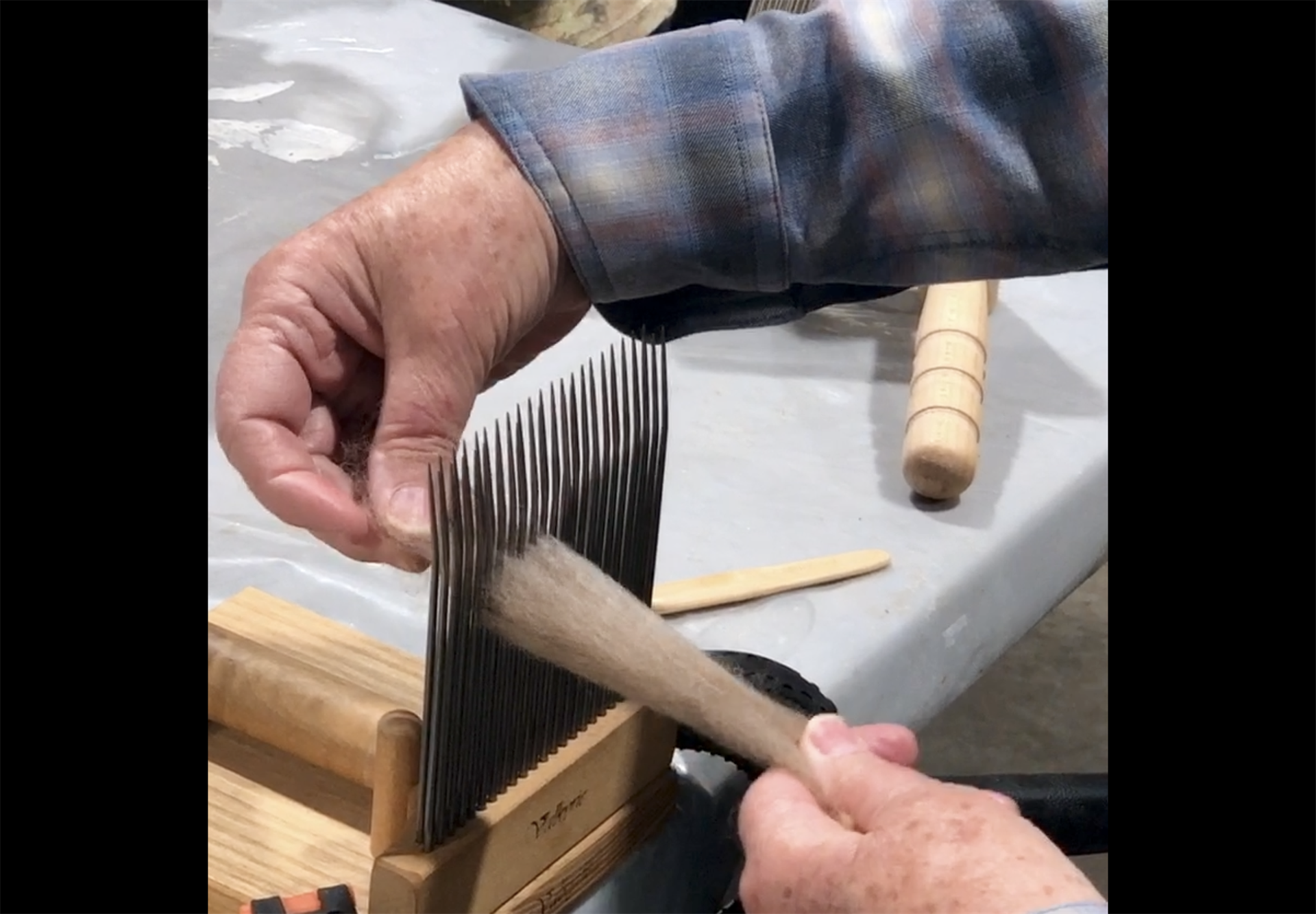
Fig 4. Combing the fiber, and locking down the fiber-loaded comb to the table.
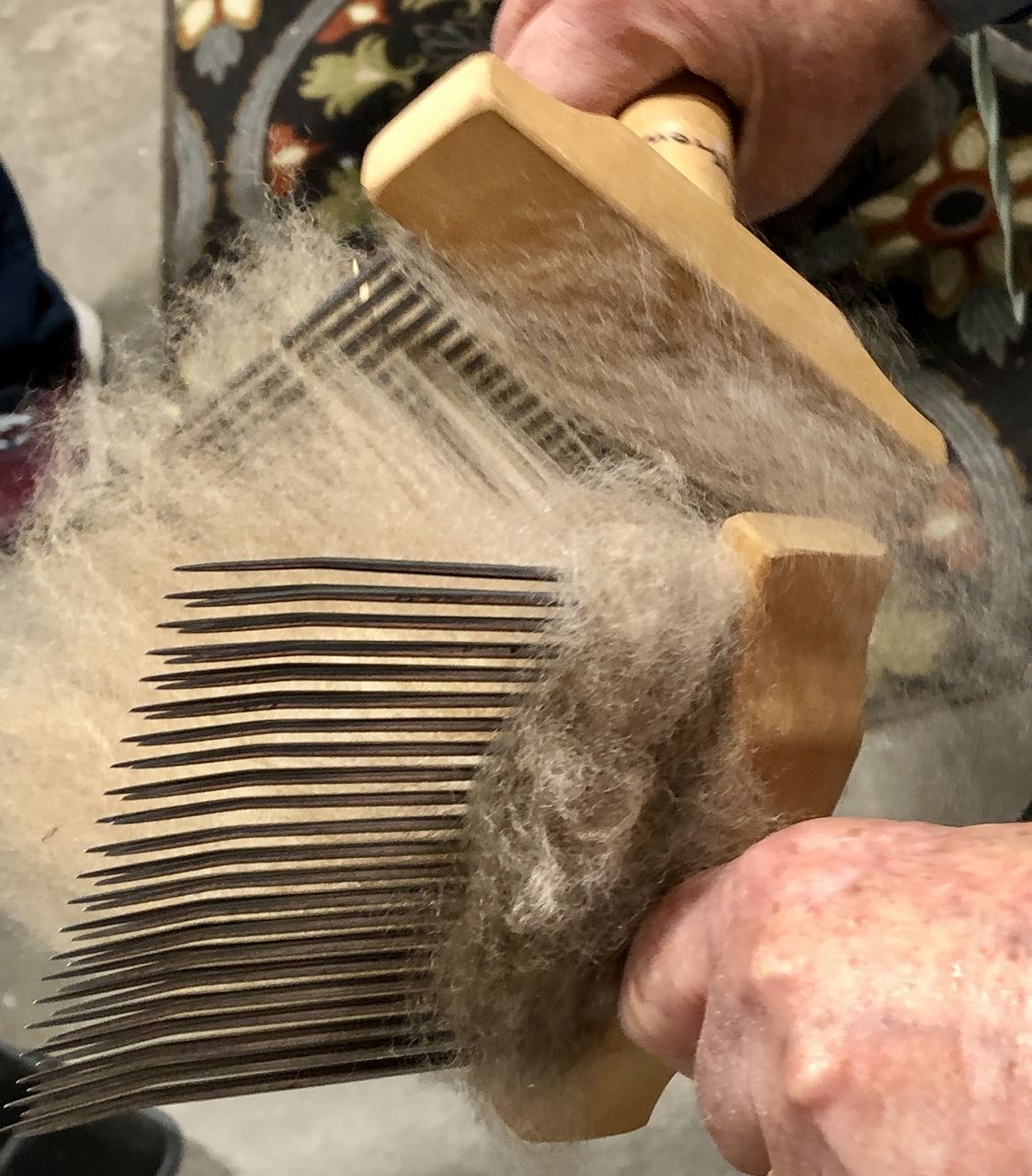
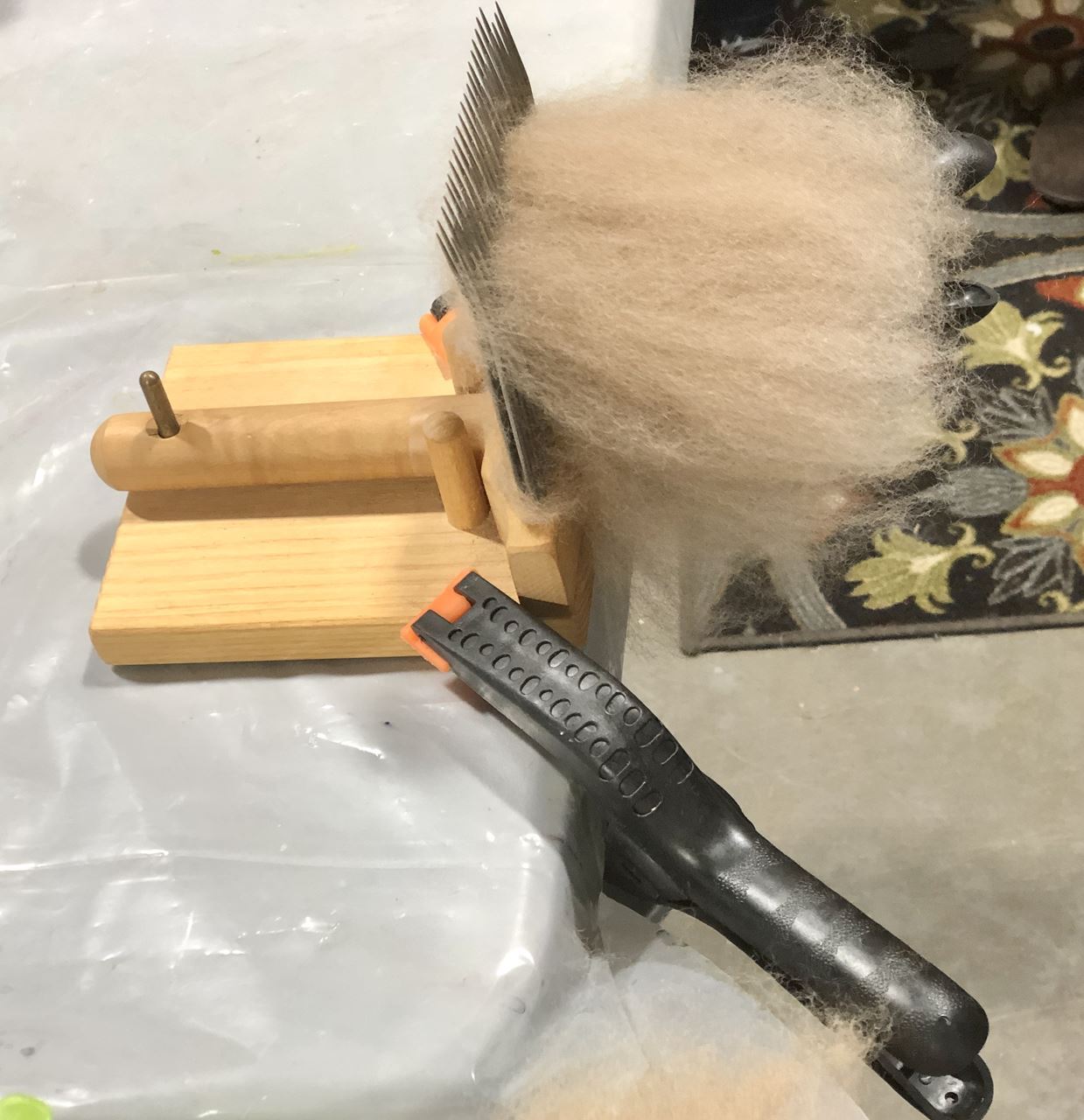
Fig. 5. To start dizzing, a crochet hook is used to pull fiber through the hole; just starting to pull fibers through hole; a later stage when dizzing is nearly complete.
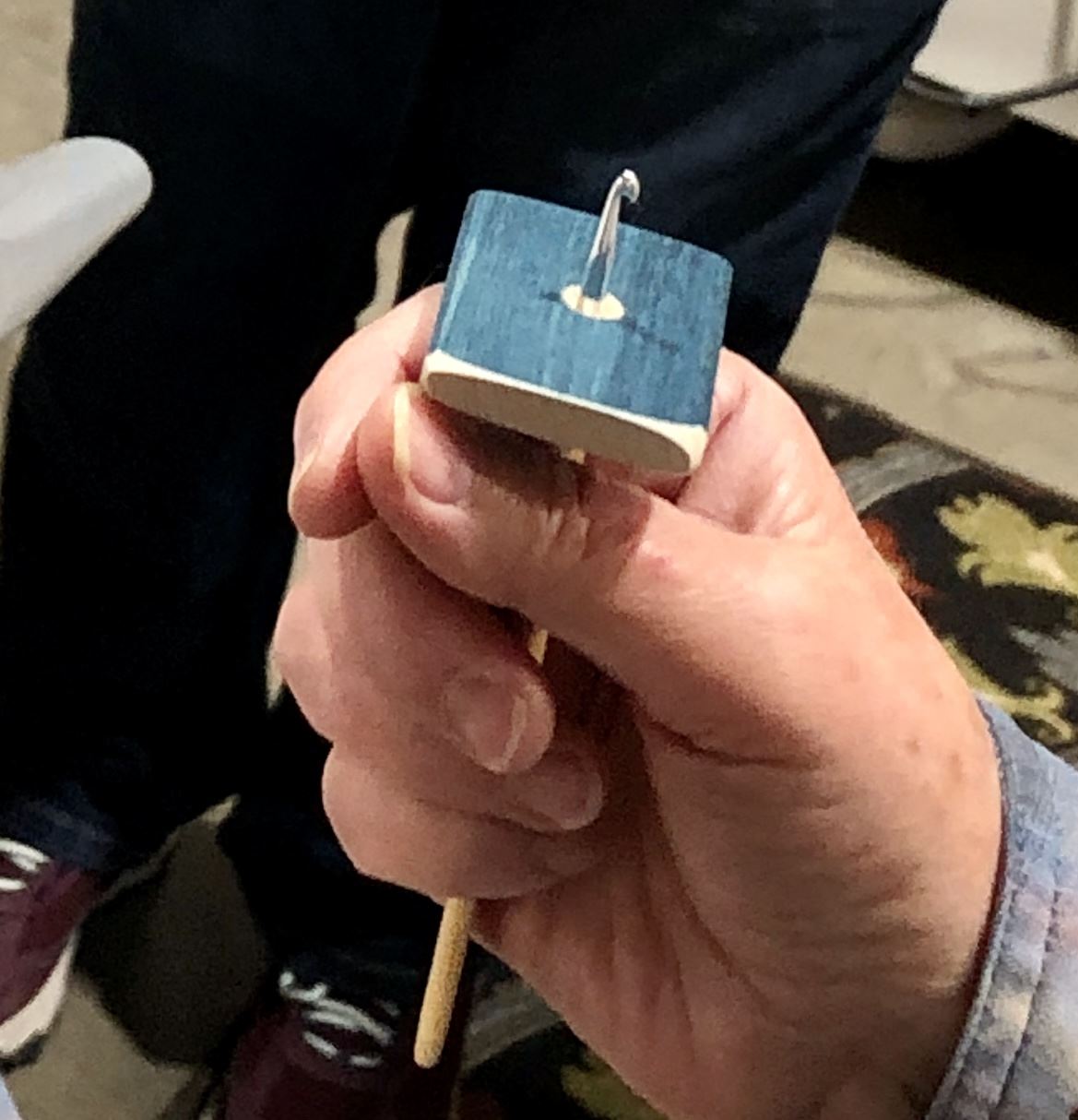
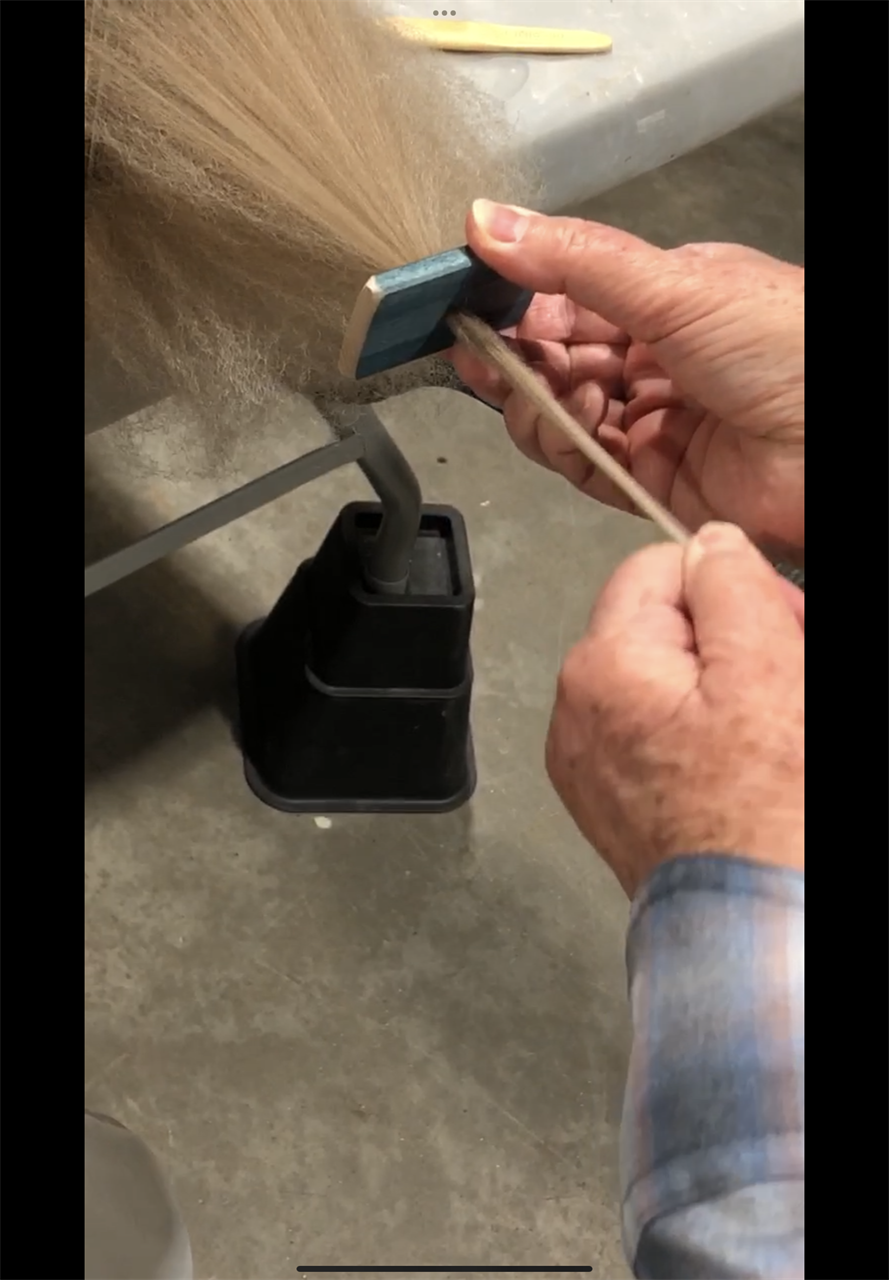
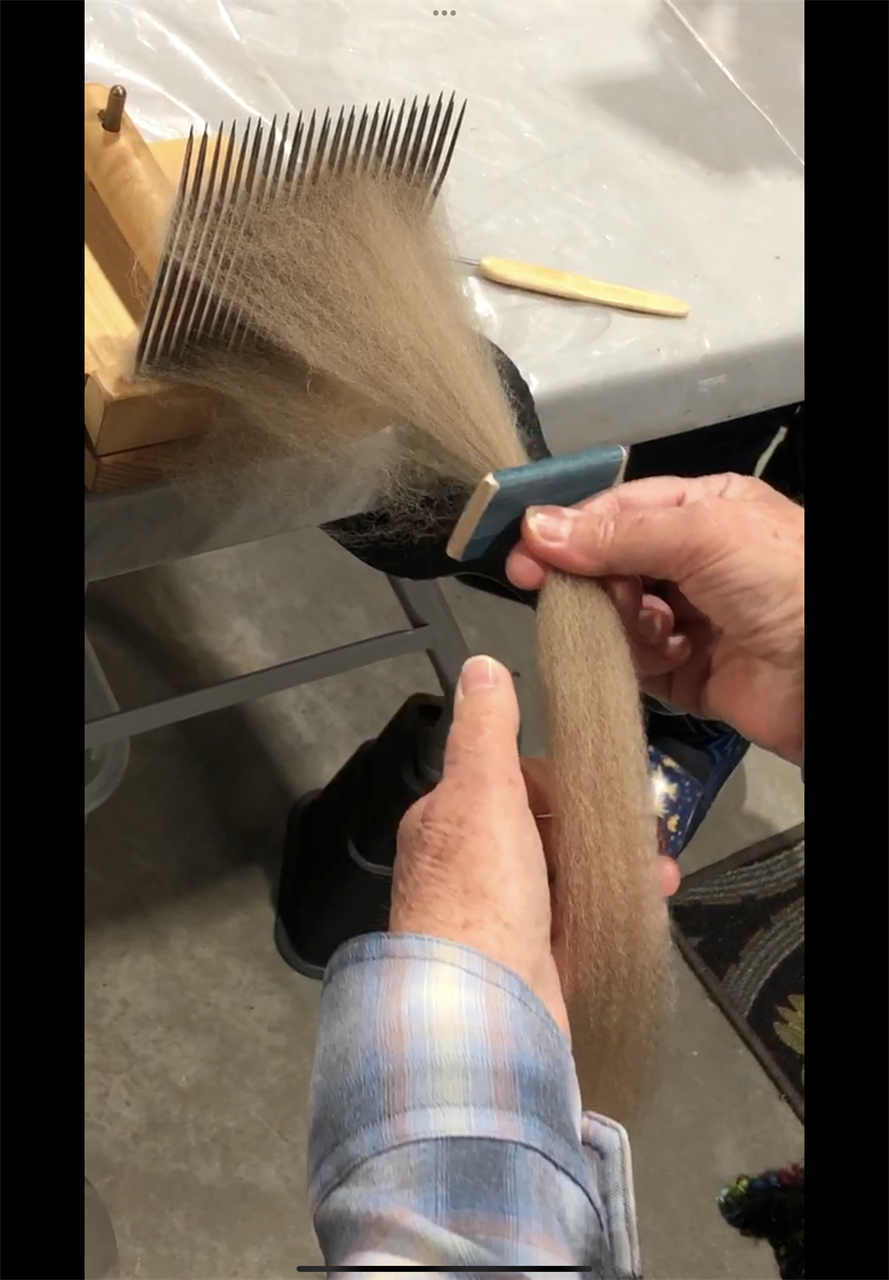
Fig. 6. A fine roving that is easy to spin is the result.
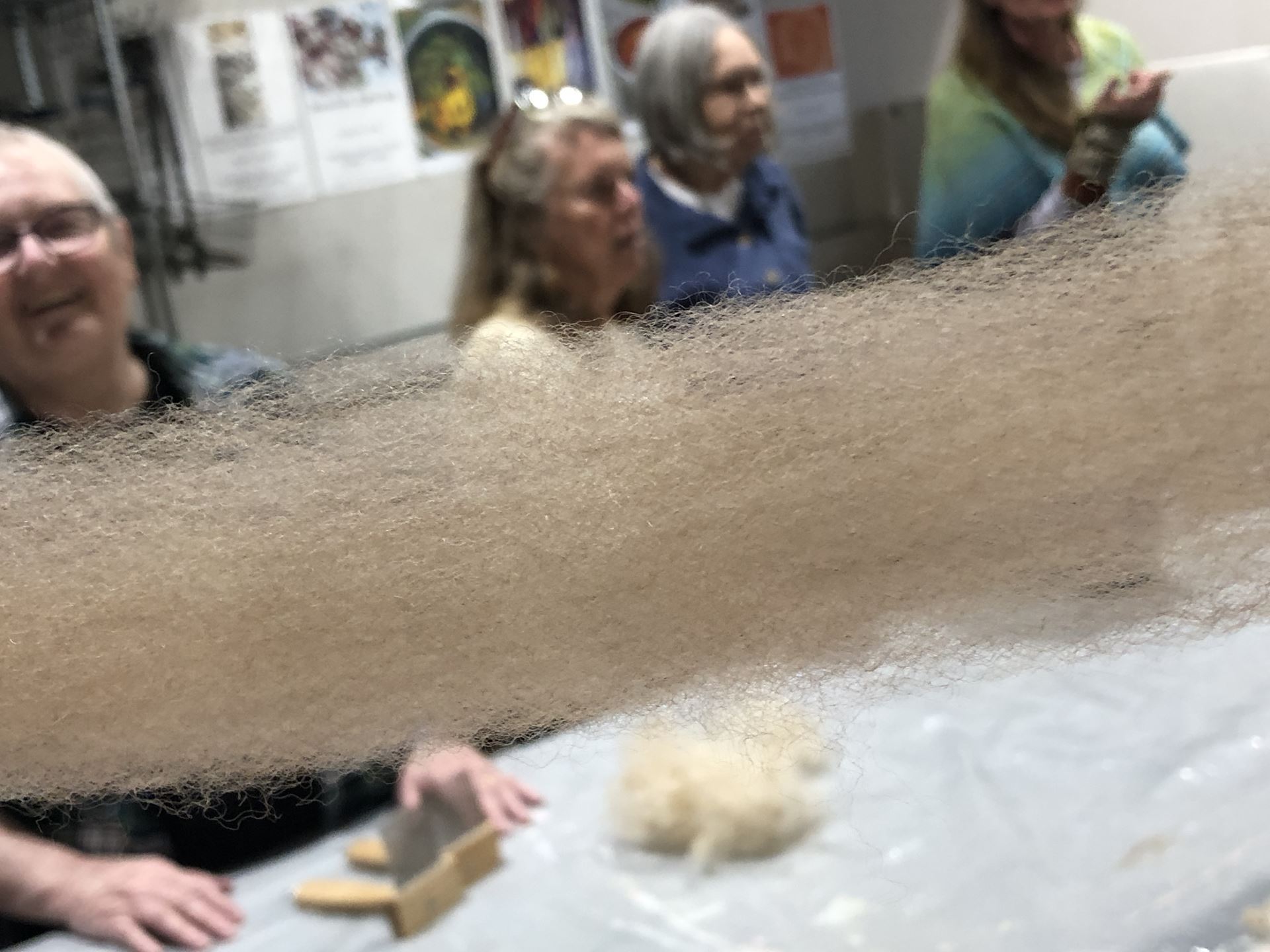
I blended off-white Shetland wool with small amounts of various colors i wool on a small drum carder. Then I used a washer (found in a tool box) to diz roving off of the drum carder. The Shetland I had purchased locally from Hidaway Farms Shetlands & Icelandics, Hendersonville, NC.
Fig. 7. Shetland roving; blended fiber from drum carder which was dizzed straight from the drum carder; spinning the fiber; yarn spun and plyed using the chain ply technique.
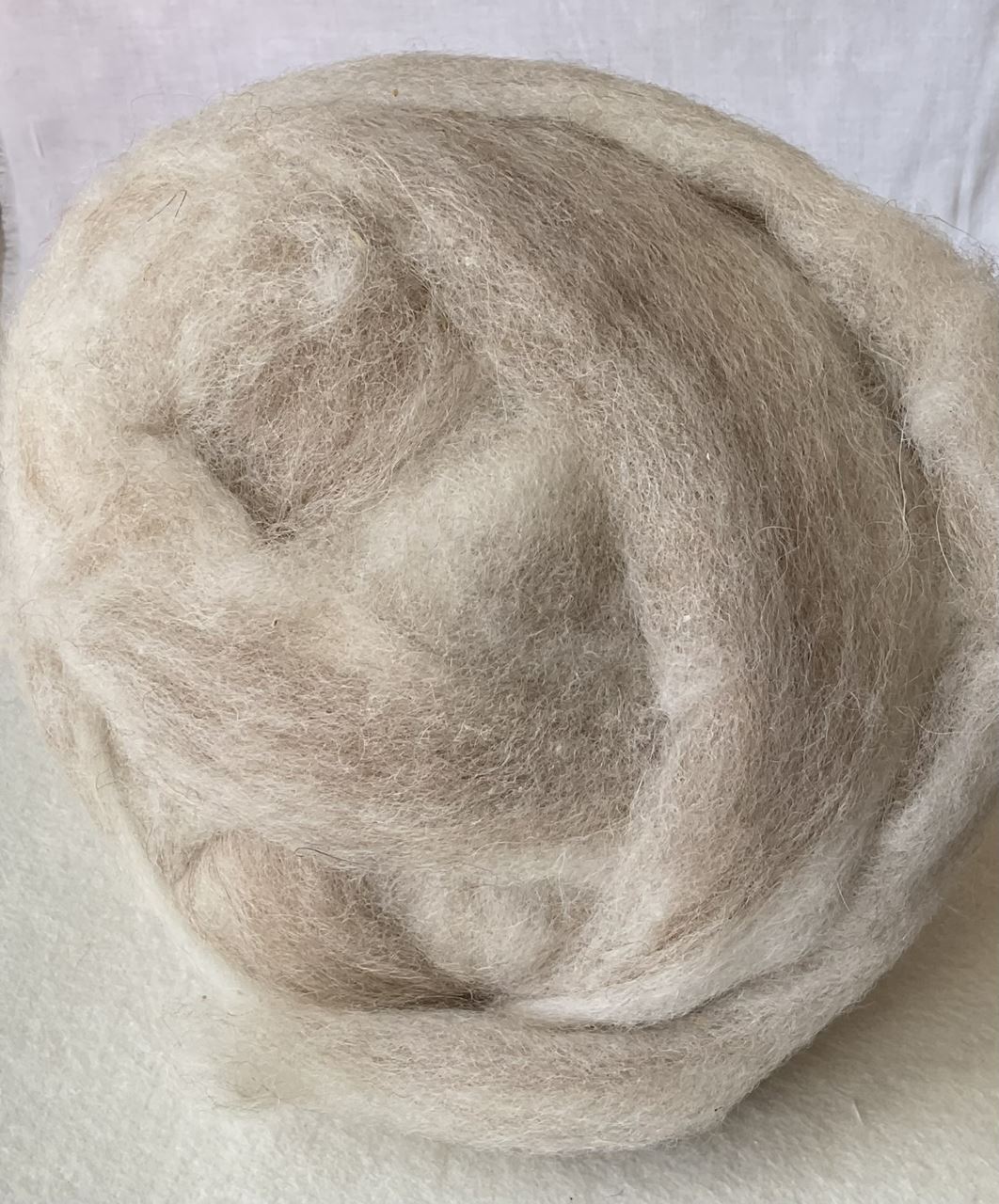
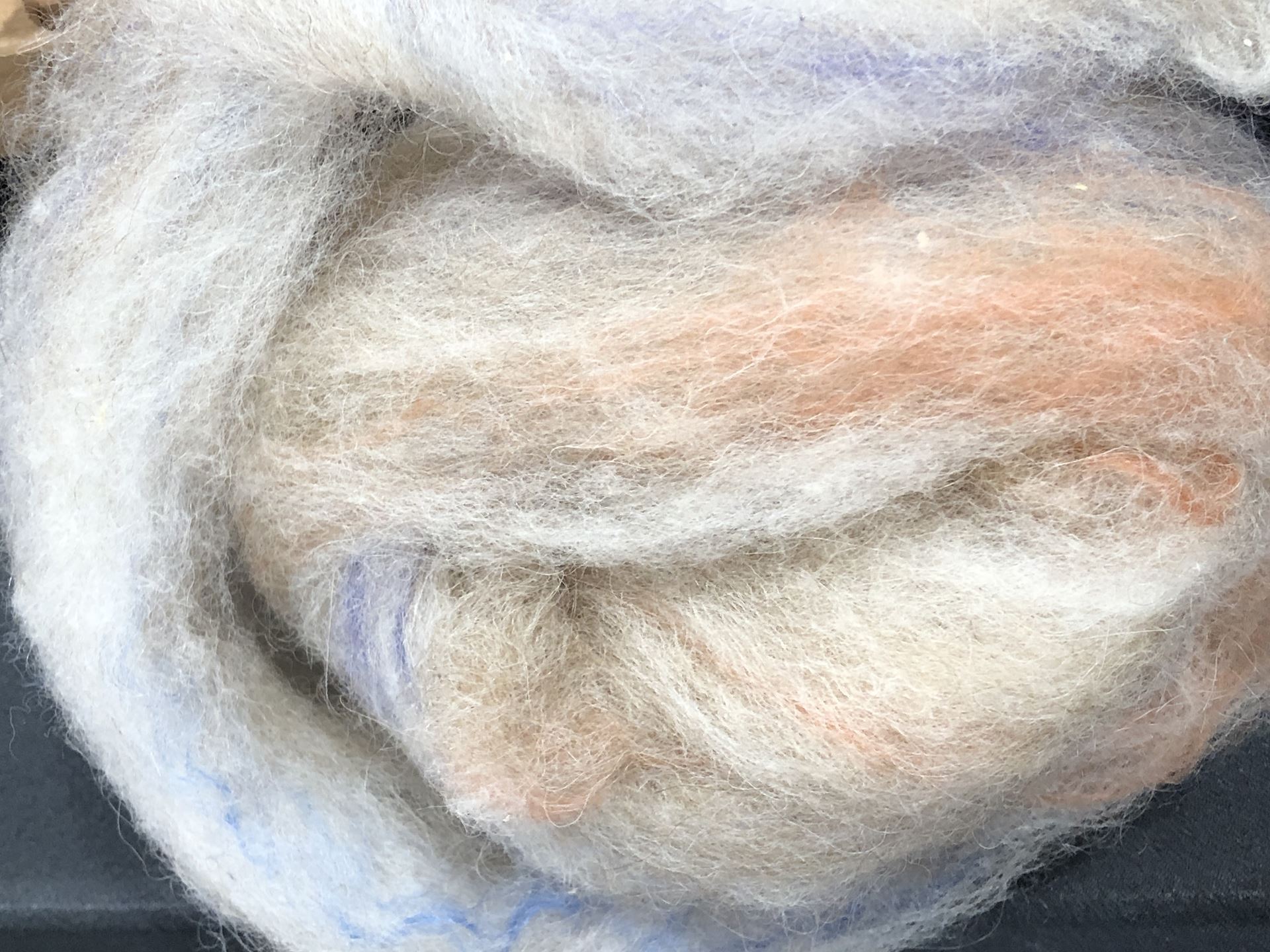

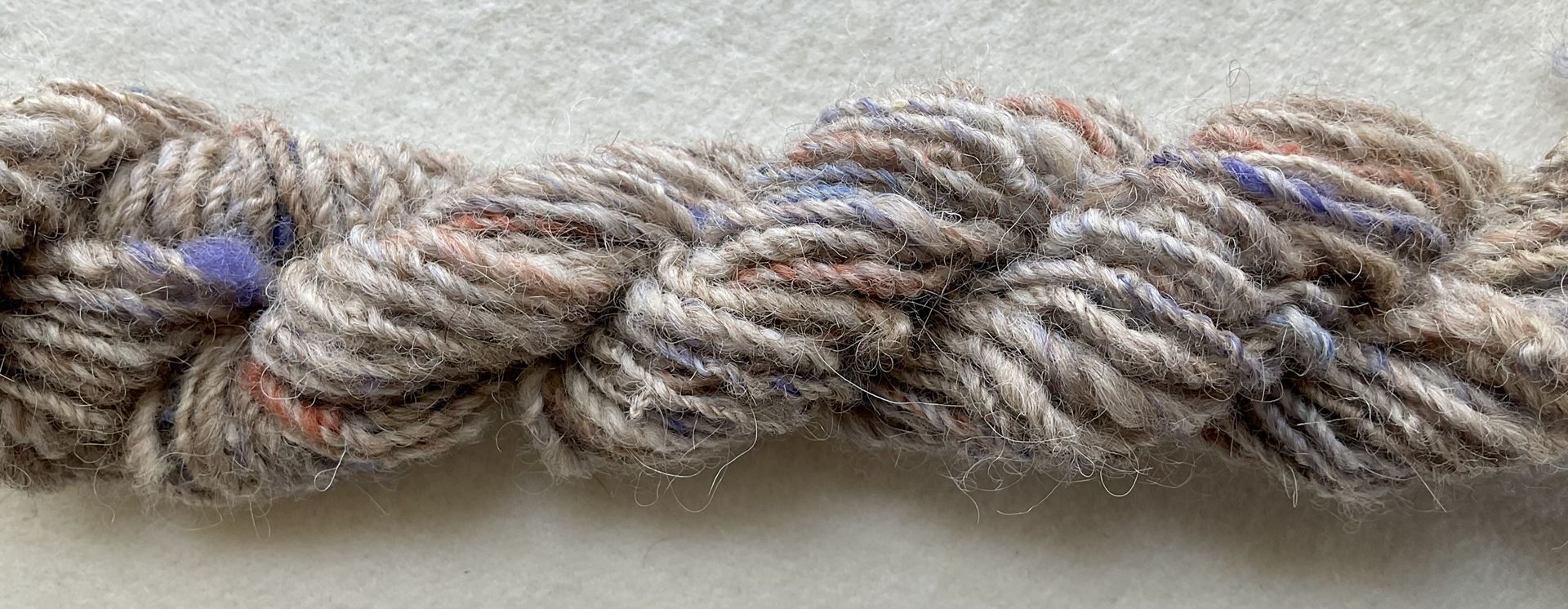
Fig. 8. The spinning study group in action.
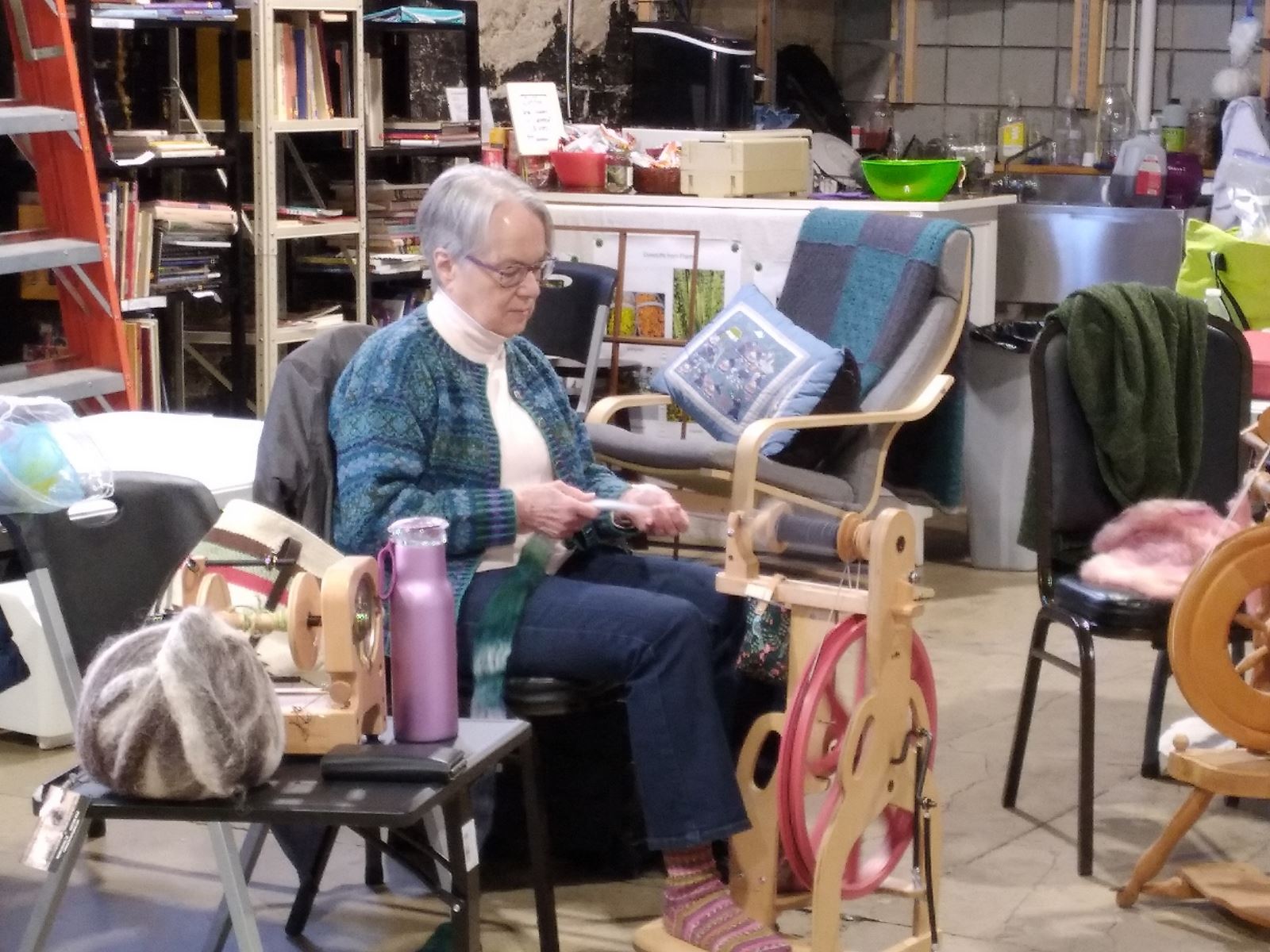
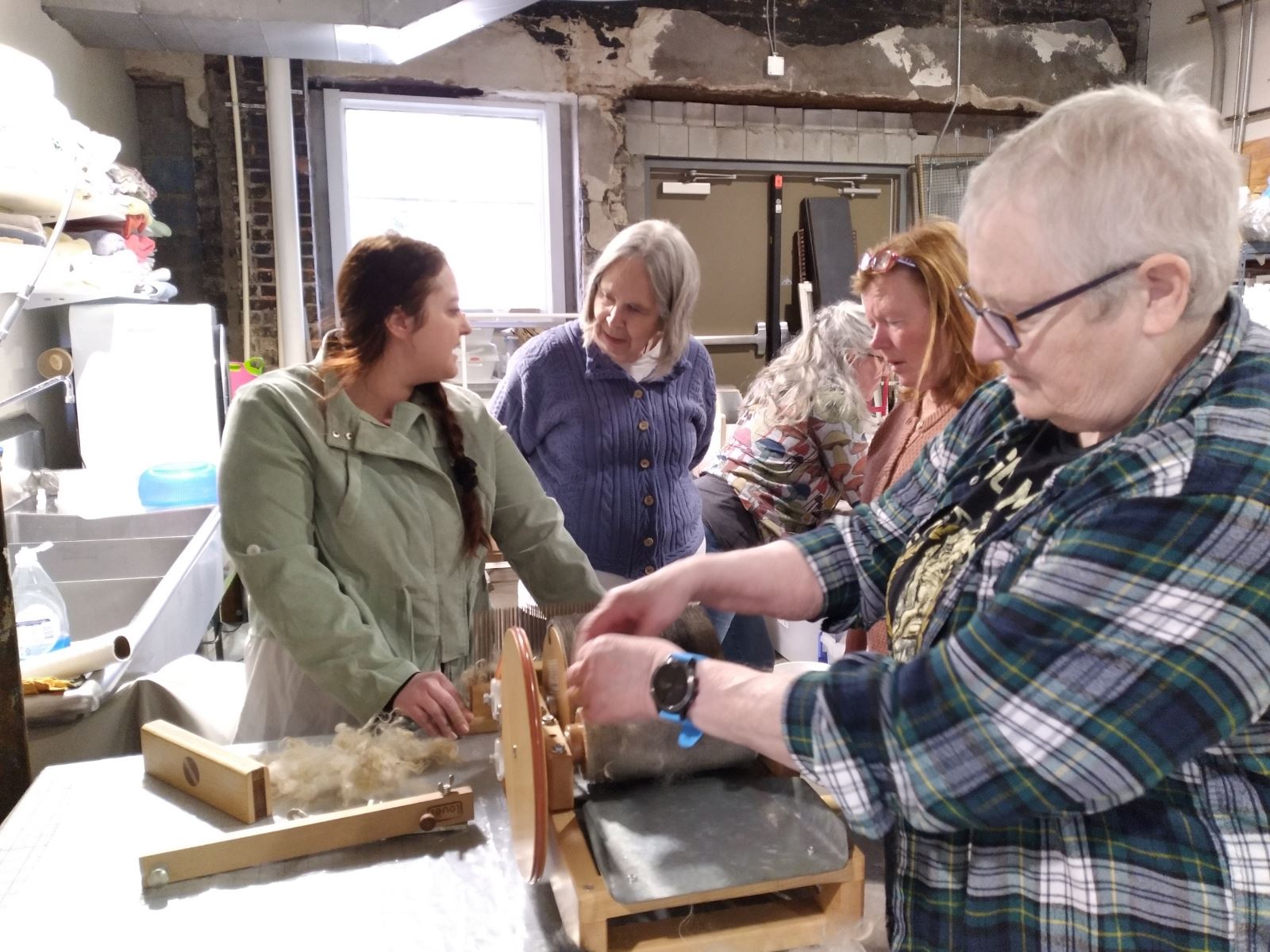
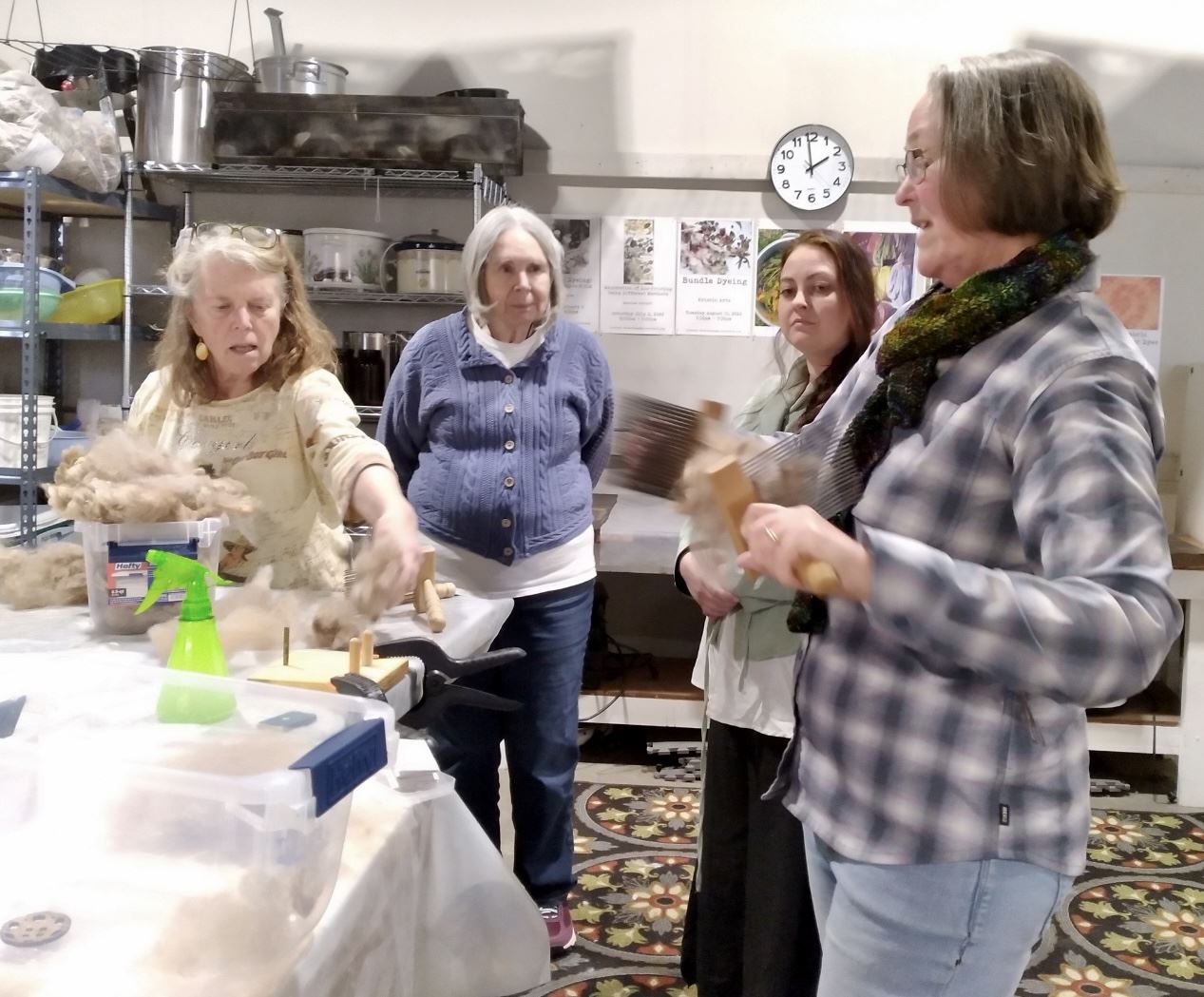
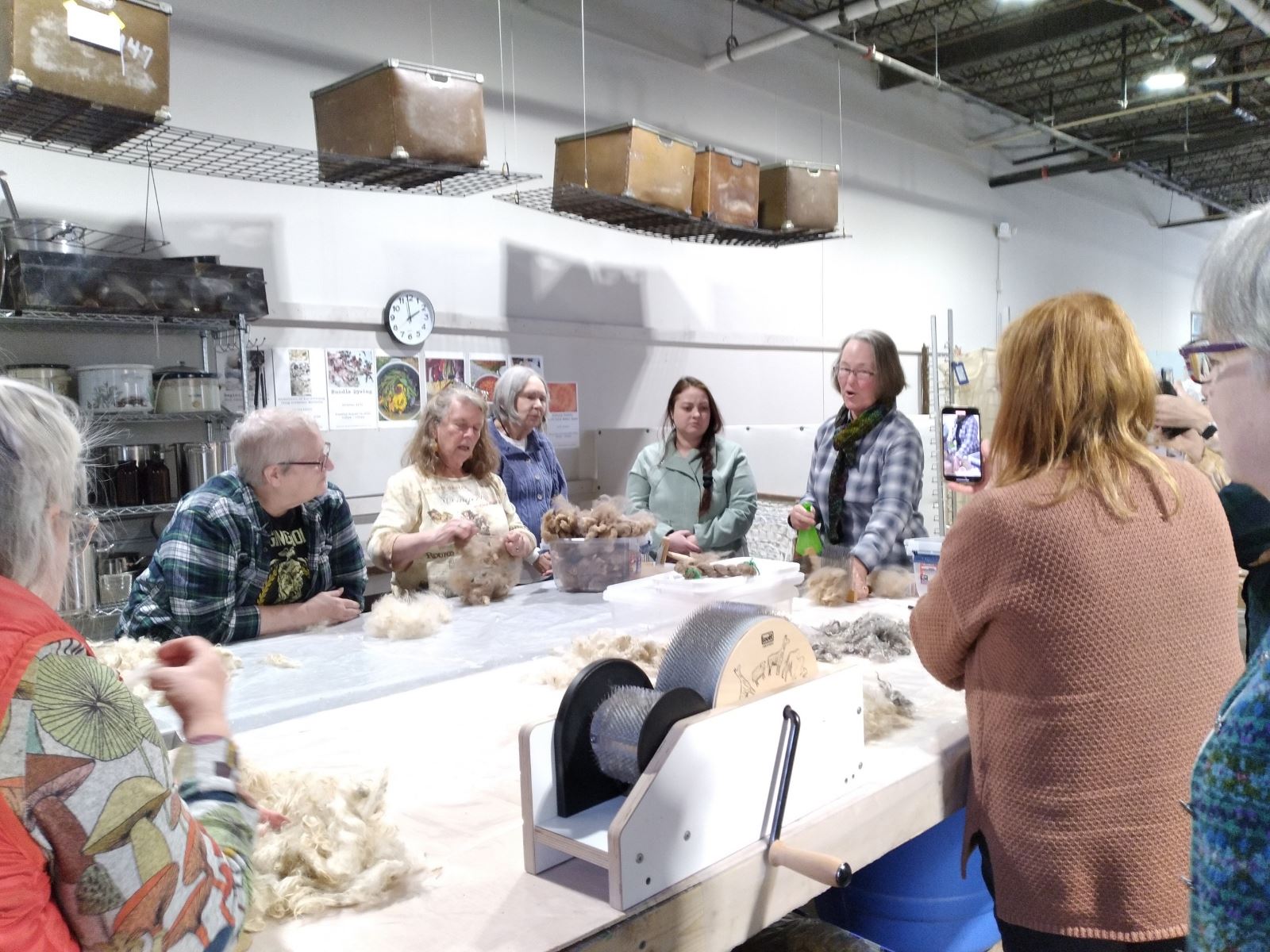
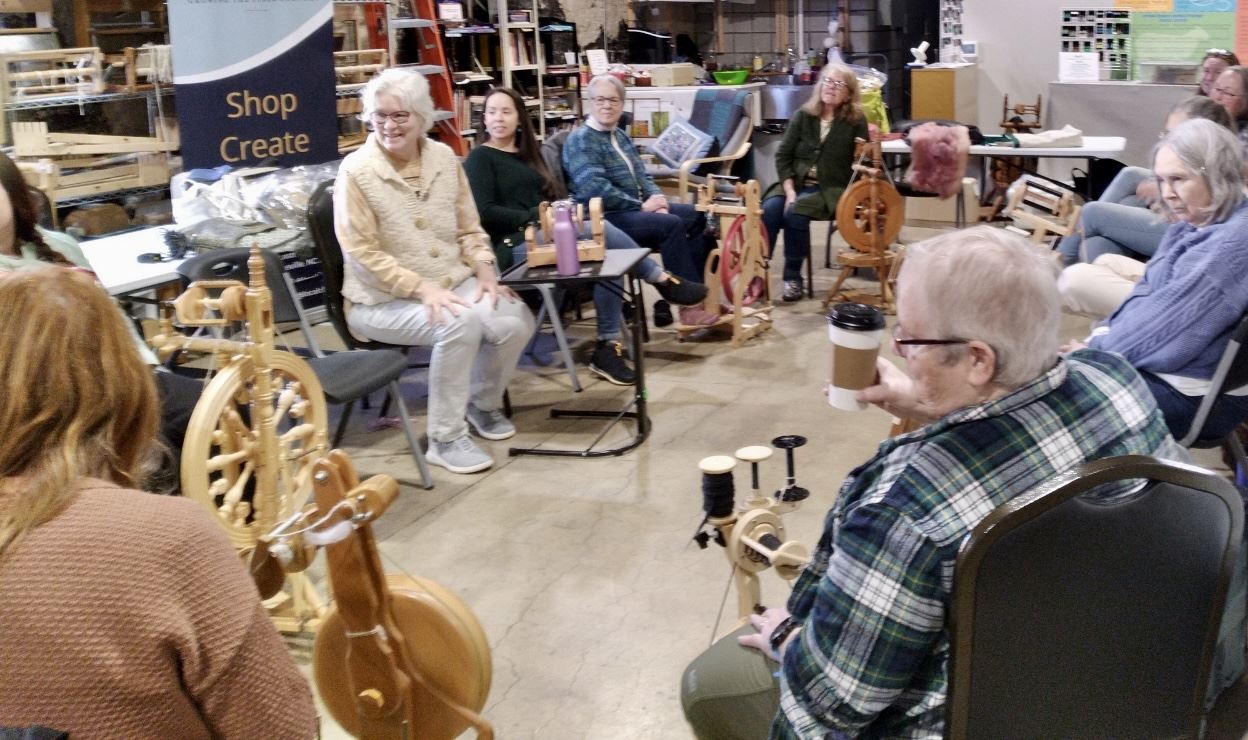
Photos by Susette Shiver and Kathleen Lewis
